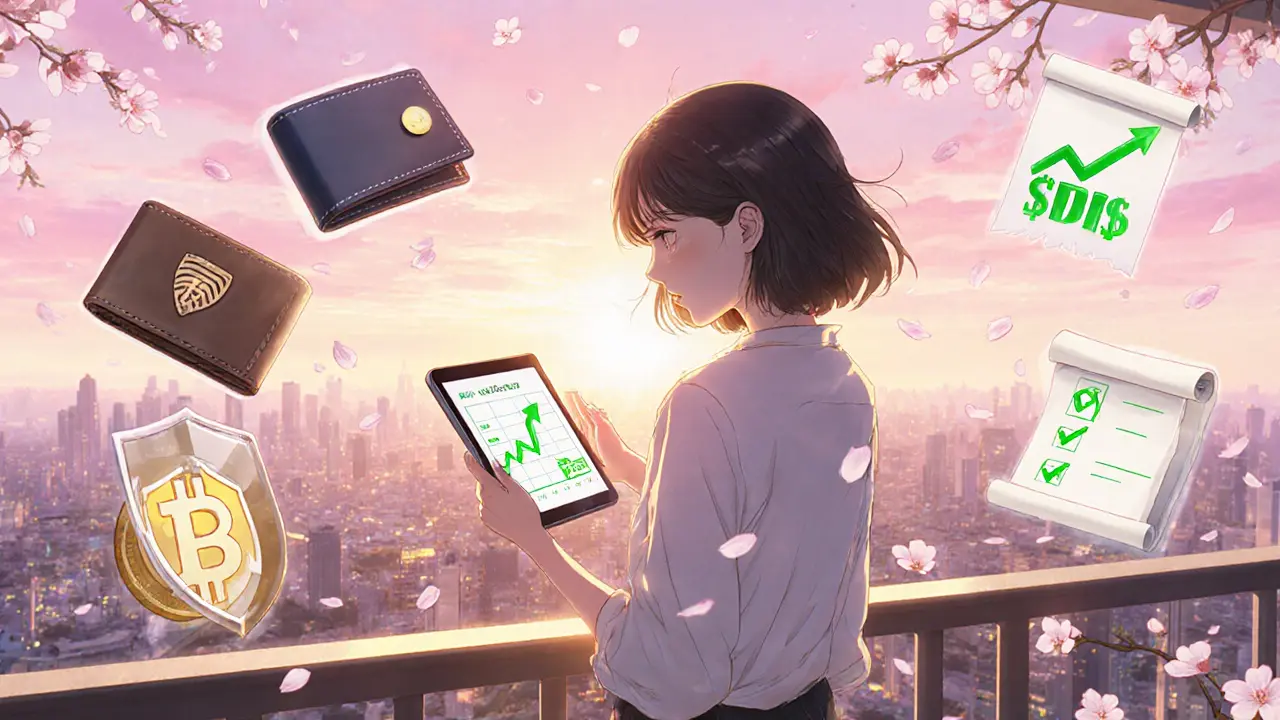P2P Crypto Trading Volume Tracker
Select a country to view details about its P2P trading volume trends and regulatory impact.
Global P2P Volume Trends
Russia
-25% volume drop post-2024 sanctions
Iran
-28% volume reduction due to sanctions
Pakistan
+12% growth with new licenses
Argentina
+35% surge in cross-border swaps
Kenya
+22% rise in regulated exchanges
China
Full ban on P2P trading
Imagine trying to send money to a family member when the government just declared crypto illegal, banks are shut, and every online platform flags your wallet. That’s the reality for millions living in P2P crypto trading hotspots where sanctions, bans, and hyper‑tight compliance choke the flow of digital cash.
What "P2P Crypto Trading Volumes" Actually Mean
When it comes to P2P crypto trading volumes the total value exchanged directly between individuals without a centralized exchange, the numbers are a litmus test for how much freedom users have in restricted jurisdictions. High volumes suggest thriving underground markets; sharp drops usually point to new regulatory blows.
Regulatory Landscape in 2025
Between 2023 and 2025 the global picture shifted dramatically. Only 12% of emerging markets held outright bans in 2025, down from 19% two years earlier. Yet, the same 88% that "permit" crypto often embed strict rules that squeeze P2P activity, especially where international sanctions apply.
- Countries with blanket bans: China, Egypt, Algeria, Bolivia, Morocco, Nepal, Bangladesh, Tunisia.
- High‑sanction jurisdictions (OFAC focus): Afghanistan, Iran, North Korea, Syria, Cuba.
- Selective‑restriction markets: Canada, India, Japan, Nigeria, Uzbekistan.
These tiers create a fragmented ecosystem where a trader in one city may face a completely different set of limits than a neighbor just across the border.
OFAC Sanctions: The Biggest Volume Killer
Office of Foreign Assets Control (OFAC) the U.S. agency that enforces economic and trade sanctions has been the single most potent force shaping P2P volumes. After the 2024 expansion of its sanctions list, Russian and Iranian P2P platforms saw a 60% volume plunge. Across the whole crypto ecosystem, OFAC‑related actions shaved 18% off global transaction volume linked to sanctioned entities between 2023 and 2024.
Key numbers:
- $1.2billion in cross‑border crypto transactions were disrupted in 2024.
- International remittance flows through crypto in sanctioned zones dropped 21%.
- Stablecoin freezes rose to $740million, a 35% jump from the previous year.
How Major Exchanges Shape the Market
Big platforms act as gatekeepers. Their policies directly affect where P2P can happen.
| Exchange | Countries with Full Ban | Countries with P2P Limits |
|---|---|---|
| OKX | Eritrea, North Korea, Syria | Afghanistan, Iran, Russia, Ukraine’s occupied regions |
| Binance | United Kingdom, Canada, Belgium | Nigeria (Naira services disabled), India (restricted fiat on‑ramp) |
When an exchange blocks P2P, users either migrate to smaller, less‑regulated platforms or revert to peer‑to‑peer messenger apps that operate in a legal gray zone.

Country Spotlights: Volume Shifts on the Ground
Below are the most illustrative markets, each showing a different regulatory flavor.
- Russia: After OFAC’s 2024 crackdown, P2P trading volume fell 25%. Users increasingly rely on Russian‑native platforms that hide behind VPNs.
- Iran: Sanctions + domestic banking bans shrank P2P activity by 28%. Still, a small underground market persists using the Tron network for lower fees.
- Pakistan: The government permits limited P2P under strict oversight. Volume grew 12% in 2025 as local exchanges obtained temporary licenses.
- Argentina: Legalized crypto for international trade settlements in early 2025, sparking a 35% jump in cross‑border P2P swaps.
- Kenya: After lifting a 2023 ban on crypto banking services, regulated P2P exchanges saw a 22% rise in volume, driven by remittance needs.
DeFi Compliance and Its Ripple Effect
Decentralized finance platforms are not immune. In 2024, 42% of DeFi services reported lower international transaction counts after adding OFAC compliance filters. The crackdown on mixers like Tornado Cash cut illicit transaction volumes by 48%, indirectly tightening privacy options for legitimate P2P traders.
Ethereum‑based interactions involving sanctioned entities slipped 29% after mid‑2024 monitoring protocols were introduced.
Stablecoin Freezing and Wallet Blacklists
Stablecoins, often the bridge for P2P swaps, faced new pressure when nine out of ten U.S. exchanges blocked wallets on OFAC’s Specially Designated Nationals (SDN) list. This action effectively cut off a large chunk of P2P liquidity for users in restricted countries.
Resulting impact:
- Blocked wallets caused a 15% dip in daily P2P trades on US‑based platforms.
- Users in sanctioned jurisdictions turned to privacy‑focused chains (e.g., Monero) despite higher transaction costs.
Future Outlook: Regulation vs. Demand
Demand for cross‑border, low‑cost transfers isn’t fading. Emerging markets are moving toward regulated crypto ecosystems-88% now allow trading under specific frameworks. However, as long as OFAC and similar bodies expand sanction lists, the ceiling for P2P volumes in high‑risk states will stay low.
Three scenarios to watch:
- Regulatory convergence: If regional blocs (e.g., African Union) adopt unified crypto guidelines, P2P could rebound in dozens of countries.
- Escalated sanctions: New geopolitical conflicts could trigger broader OFAC lists, pushing volumes down another 10‑15% globally.
- Tech workarounds: Wider adoption of layer‑2 privacy solutions and decentralized identity could let users sidestep some restrictions, subtly boosting hidden volumes.
For traders, the key is vigilance-track exchange policy updates, monitor sanction announcements, and keep a diversified wallet strategy.
Quick Checklist for Users in Restricted Countries
- Verify the latest exchange policy for your jurisdiction (most platforms publish a country‑restriction list).
- Maintain at least two wallets: one on a major exchange, another on a privacy‑oriented chain.
- Use a reputable VPN service when accessing P2P platforms that are blocked locally.
- Stay informed about OFAC’s monthly SDN updates-affected addresses can be frozen instantly.
- Consider stablecoin alternatives (e.g., USDC vs. Tether) that might face different freezing rates.

Frequently Asked Questions
Why did P2P volumes drop in Russia and Iran after 2024?
OFAC expanded its sanctions list in early 2024, targeting dozens of crypto wallets and exchanges operating in those countries. The resulting freezes and exchange bans cut cross‑border transaction routes, causing a 60% volume decline on local P2P platforms.
Can I still trade P2P if my country is on an exchange’s restriction list?
Often yes, but you’ll need to use a workaround: a VPN to mask your IP, a wallet on a non‑restricted chain, or a smaller peer‑to‑peer platform that hasn’t been blocked. Always check the platform’s terms, because violating them can lead to account freezes.
What impact do stablecoin freezes have on everyday users?
When a stablecoin is frozen, any address holding it can’t move the funds. For P2P traders, this means a sudden loss of liquidity and the need to switch to another token, often at a higher fee or worse exchange rate.
How do DeFi compliance measures affect P2P trading?
DeFi platforms that added OFAC screening in 2024 blocked many addresses linked to sanctioned entities. Legitimate users lost some peer‑to‑peer routes, pushing them toward centralized exchanges that still allow limited P2P functionality.
Is the trend toward more crypto‑friendly regulation likely to boost P2P volumes?
Yes, especially in emerging markets where 88% now allow crypto under regulated frameworks. As long as sanctions don’t intensify, these jurisdictions will see a gradual rebound in legitimate P2P activity.


Jay K
January 22, 2025 AT 14:06Thank you for the thorough analysis. The data regarding OFAC sanctions and their impact on P2P volumes is particularly insightful.
Kimberly M
January 23, 2025 AT 17:53Great breakdown! 😊 The figures for Argentina and Kenya really show how regulatory clarity can boost adoption. Looking forward to more updates.
Navneet kaur
January 24, 2025 AT 21:40I cant beleive how some ppl still act like these numbers ar just numbers. The real issue is moral: countries cant just ignore sanctions and keep trading like nothing happended. People in Iran and Russia are takin rish risks, and thats not just a "trend" it's a crisis. Governments need to step up and protect their citizens from these illegal crypto shenanigans. If we dont, we're just enabling crime and chaos. Too many ppl think it’s just about profit but it's about security and sovereignty.
Marketta Hawkins
January 26, 2025 AT 01:26Look, the data proves what we already know: every time the US throws sanctions at a country, the crazy crypto crowd jumps through hoops. It's the same old story, and nobody is surprised. 🙄
Drizzy Drake
January 27, 2025 AT 05:13Wow, this report really hits the nail on the head when it comes to how sanctions shape the P2P landscape. The numbers you shared about the 25% drop in Russia are spot on and reflect the real pain users feel when their options disappear. It also shows how quickly users can adapt by moving to native platforms that hide behind VPNs; that agility is something we often underestimate. The 12% growth in Pakistan is a clear sign that even limited licensing can create a tangible boost in activity, proving that policy tweaks matter. Meanwhile, Argentina's 35% surge highlights how a regulatory shift can unlock massive cross‑border demand, especially for remittances. Kenya's 22% rise further demonstrates that when governments lift bans, the pent‑up demand for crypto services surfaces fast. The consistent theme across these cases is that users crave low‑cost, fast transfers and will find ways around restrictions, whether that means using privacy‑focused chains or obscure messengers. I also appreciate the mention of DeFi compliance; the 42% drop in transaction counts after OFAC filters underscores how intertwined centralized and decentralized ecosystems have become. Stablecoin freezes are another pain point – when wallets get blacklisted, it’s not just a freeze, it’s a liquidity crunch that forces traders onto higher‑fee alternatives. The future scenarios you outline are realistic: regulatory convergence could indeed spur a rebound, but escalating sanctions remain a looming threat. Tech workarounds, like layer‑2 privacy solutions, will likely keep a hidden volume alive, even if official stats look grim. For anyone navigating these waters, staying vigilant about exchange policies and sanction updates is essential. Diversifying wallets and using reputable VPN services are practical steps that can mitigate some of the risk. Overall, the report paints a nuanced picture: demand stays high, but the regulatory environment is the key variable that will determine whether volumes climb or continue to fall. Thanks for putting together such a comprehensive overview; it’s a valuable resource for traders and policymakers alike.
AJAY KUMAR
January 28, 2025 AT 09:00Patriotic folks see this as proof that our nation must protect its own digital assets against foreign sanctions – otherwise we’re just playin’ into their hands.
bob newman
January 29, 2025 AT 12:46Oh sure, everything's just about "regulation" – you forget the hidden agenda behind these sanctions. The deep‑state wants to control every transaction, and they use crypto as an excuse to tighten their grip. 😂
Anil Paudyal
January 30, 2025 AT 16:33Interesting data, thanks.
Kimberly Gilliam
January 31, 2025 AT 20:20another boring report, nothing new.
Jeannie Conforti
February 2, 2025 AT 00:06Good info. The tips about vpn and wallets are helpful for newbies.
tim nelson
February 3, 2025 AT 03:53Appreciate the balanced view. It’s clear that while sanctions hurt volume, there’s still resilience in the community.
Zack Mast
February 4, 2025 AT 07:40One could argue that the very act of imposing sanctions creates a philosophical paradox: trying to control freedom by limiting a tool designed for decentralization. Yet, the market adapts, revealing an underlying truth about human ingenuity.
Dale Breithaupt
February 5, 2025 AT 11:26Love the optimism! If more regions adopt clear crypto rules, we’ll see a surge in legitimate P2P trades.
Rasean Bryant
February 6, 2025 AT 15:13Great work! This thorough analysis gives us all the confidence we need to navigate the evolving crypto landscape.